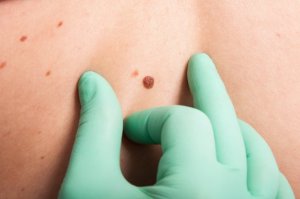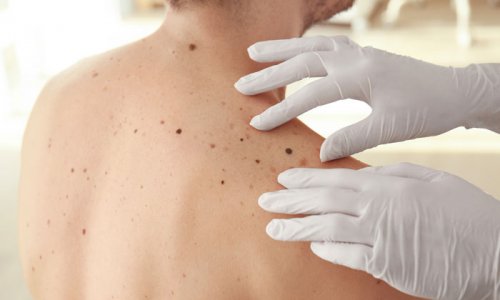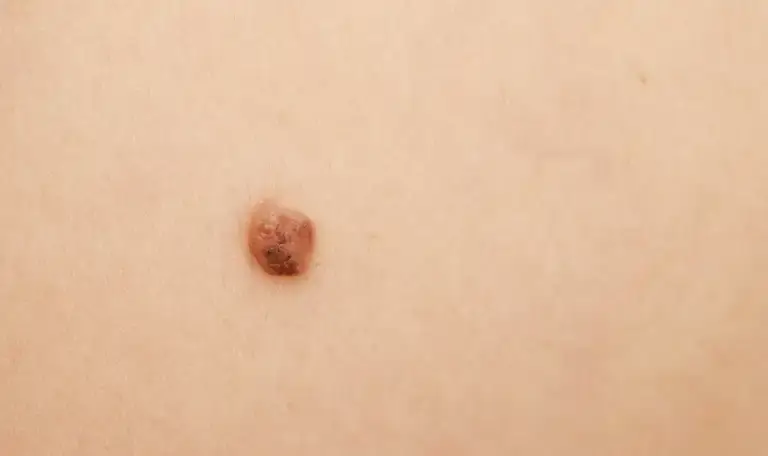What is The ABCDE Test in Dermatology?

The ABCDE test is a technique used by dermatologists to analyze moles and skin lesions that could be cancerous.
According to a study by the National Cancer Institute, skin cancer is the third most common type of cancer. The same study indicates that this disease mainly affects people with light skin and claims that in more than 90% of cases, direct ultraviolet radiation is directly responsible for it.
That said, preventive habits such as self-assessment and annual check-ups play a very important role in the fight against this type of cancer. Also, the study indicates that 90% of early detected skin cancer cases can be cured.
Therefore, the ABCDE test is an important diagnostic tool. The words asymmetry, border, color, diameter, and evolution are used for the various steps of this test. With this system, doctors can differentiate moles from harmless spots and try to prevent what’s one of the most aggressive and dangerous types of skin cancer: melanoma.
The ABCDE test: What should you look for in a mole?

Certain moles are more likely to become malignant melanoma. This could happen with those moles that you’ve always had as well as with newly formed ones. However, the latter is more likely to become melanoma.
If you can’t tell which are regular moles and which could be cancerous, you can get an idea by learning the five letters of the ABCDE test:
A: Anomaly
The first letter tells us that we have to look at the shape of the moles. Those that are harmless are usually round and symmetrical. That is, if you were to fold them, then both halves would overlap.
On the contrary, melanomas tend to be asymmetric and have no specific shape.
B: Border
The second thing to look for is how regular the edges of a mole are. This feature is another clue to know if it can be melanoma. When the edges of a mole are irregular or have jagged, sharp, wavy, ill-defined boundaries, then the mole is likely to be cancerous.
You may also be interested in: 6 Skin Cancer Symptoms You Should Not Ignore
C: Color
Harmless moles present the same hue throughout their pigmented area. However, if you find a spot that has a variety of colors from one area to another (brown or black, and sometimes even white, red, or blue), then it’s possible that your mole is melanoma.

D: Diameter
Another important thing to keep in mind is the size of the mole. If its diameter (the distance from one end of the mole to the opposite side), is 1/4 inch or more, then the mole may be melanoma. Benign or harmless moles are usually small.
A good measuring device for measuring moles is the erasers that many pencils have on the end. It’ll give you a good visual, as the size of the eraser is about 1/4 inch.
E: Evolution
Finally, the evolution of the mole must be considered. If it presents progressive changes in color and size or other spots appear around it, it’s a clear sign that it could be melanoma.
You can do this quick dermatological exam in addition to having an annual dermatological review to prevent any type of problem. In the event that you find any anomaly, don’t hesitate to see a doctor.
As a complement to the ABCDE test for dermatology and to help distinguish if there are serious health risks, there are other changes in spots or moles that can be the beginning of melanoma. Some of these changes are as follows:
- Swelling
- Itching
- Bleeding
We think you may also like to read: New Cancer Treatment? Photoimmunotherapy Successfully Eliminates Malignant Cells
Some tips to prevent skin cancer
The main preventive measure is protection against solar radiation and artificial sources of UVA rays. It should be noted how important it is to avoid UV self-tanning booths, as well as using a suitable sunscreen on a daily basis.
Here are some steps you should take to try to prevent skin cancer:
- Don’t expose yourself to the sun without photoprotection: You should use protection of at least 30 SPF, although 50 is more effective.
- Avoid sunbathing between 12 in the morning and 5 in the afternoon, especially during the hottest times of the year.
- Don’t expose children under 3 years of age to the sun. Protect them with caps and photoprotector adapted to their skin type.
Remember, the better you take care of your skin, the lower the risk of health problems.
All cited sources were thoroughly reviewed by our team to ensure their quality, reliability, currency, and validity. The bibliography of this article was considered reliable and of academic or scientific accuracy.
- Schadendorf, D., van Akkooi, A. C. J., Berking, C., Griewank, K. G., Gutzmer, R., Hauschild, A., … Ugurel, S. (2018). Melanoma. The Lancet. https://doi.org/10.1016/S0140-6736(18)31559-9
- Castañeda, Paola Eljure, J. (2016). El cáncer de piel, un problema actual. Revista de La Facultad de Medicina de La UNAM.
- Merino, M. (2005). Prevención del cáncer de piel y consejo de protección solar. Revista Pediatría de Atención Primaria. https://doi.org/10.1504/IJADS.2017.084312
This text is provided for informational purposes only and does not replace consultation with a professional. If in doubt, consult your specialist.








